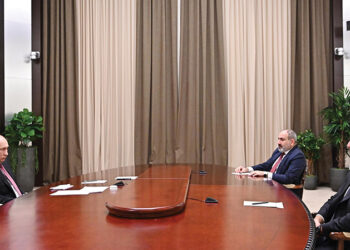Change, growth, and development are essential requirements of organizational life. No matter how many qualified personnel are hired, no matter how accurate and optimal the selection and placement decision may be, changes in technology, economics, law, or in the social or political environment demand personnel training and organizational development from the organization.
The purpose of the training and development programs is to achieve continuous growth of employees’ knowledge and qualifications, changing attitudes and social behavior to match organizational goals.
Training is widely used as a coping strategy for change. These changes imply a dual responsibility: the organization must provide an atmosphere that supports and encourages change; the personnel are obliged to get the maximum benefit from the change and from the opportunities offered by the training.
If we look at training and development practices, we see that the companies with the most effective training practices are distinguished by four features: Training and development programs are implemented with the active support of senior management; the training is part of the corporate culture; the training is related to the business strategy and goals and merges with the results; there is a comprehensive and systematic approach to training and training and retraining is carried out at all levels on a regular basis.
The potential for training and development as a means of change is quite impressive. However, the full realization of this potential rarely happens. The main reason for this is that we often pay more attention to teaching techniques than to their content. The training and development process consists of several steps, each of which will be discussed in more detail in the following section: A thorough analysis of their interaction with training and development subsystems and other systems; determining the need for training; clearly and unambiguously formulate training objectives; breaking down the training task into structural components (dividing the learning task into component components); determining the optimal sequence of constituent components; discuss alternative ways of teaching;
All existing models of planned changes include three main phases: the planning (data collection) phase, the implementation phase, and the evaluation phase. The planning phase involves identifying the necessary changes; the implementation phase is the evaluation, selection, and actual implementation of change strategies; the evaluation phase involves the systematic recording of the results of the changes; the planning phase involves identifying the necessary changes; the implementation phase is the evaluation, selection, and actual implementation of change strategies; the evaluation phase involves the systematic recording of the results of the changes; the planning phase involves identifying the necessary changes.
A further task of goal-setting is to select adequate teaching principles and environment. In the next phase, training measures and job performance criteria are established to determine what changes will occur during the implementation of the training program. The main goal of the training is to develop the desired work habits – This should never be overlooked!
The need for and importance of training should be defined concerning general organizational goals. For training and development to be as productive as possible, it must complement the rest of the organizational process: Selection, placement, work planning, and performance appraisal. When the goals of the training are not clearly defined and the content of the training is not related to the desired behavior, the effectiveness of the training is low.
The planned change model is an ideal alternative to organizational change and development. There are two common ways to plan for change. The first – training – is the most common form of change. Indeed, all kinds of interference at the individual, group, or organizational level are accompanied by some form of training, even if it involves only the introduction and development of innovations.
The second way to apply the planned change – organizational development – is the most daring form of the mixture. Its purpose is to thoroughly transform a broad segment of the organization, or the entire system as needed, using appropriate techniques; structural reorganization; job updating; selection; placement; etc.
Training is defined as a systemic change in the behaviors of members of the organization, any process that serves to increase the productivity and efficiency of the organization. The goal of any training is to change personnel according to the goals and interests of the organization.
Training plays an extremely important role and is gaining in significance. According to one estimate, in the future, firm managers will be forced to retrain their employees several times over the course of their careers. It is estimated that as far back as 1975, $4 million was spent by business organizations on external training and $1.6 billion on internal organizational training. Naturally, these data have grown significantly since.
The key issues of training and development are: building a training program; training theory and principles; and specific training techniques, their strengths, and weaknesses. Training programs have become the subject of research in industrial and organizational psychology.
It is necessary to analyze the organization, determining the goals of the organization and the extent of their achievement. The purpose of the organizational analysis is to link strategic planning with training outcomes to determine if training a suitable way to solve the problem. Clarifying the organization’s climate is also useful for such analysis. If the organization is weak in any area, the question should be asked as to whether it is possible to solve the problem through training. An organizational analysis should not be limited to current problems and should be able to anticipate potential problems so that, through training, you can avoid them in the future.
By Salome Kekelidze














